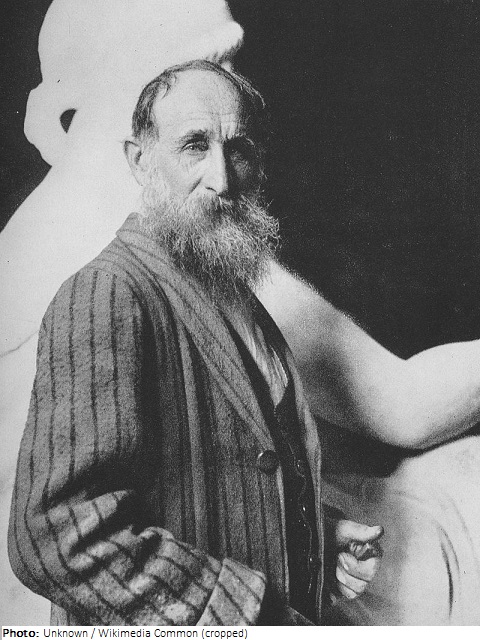Aristide Maillol

Biographical information
| Roles | Referee |
|---|---|
| Sex | Male |
| Full name | Aristide Joseph Boneventure Jean•Maillol |
| Used name | Aristide•Maillol |
| Born | 8 December 1861 in Banyuls-sur-Mer, Pyrénées-Orientales (FRA) |
| Died | 27 September 1944 (aged 82 years 9 months 19 days) in Banyuls-sur-Mer, Pyrénées-Orientales (FRA) |
| NOC |  France France |
Biography
Aristide Maillol moved from his native Banyuls-sur-Mer to Paris in 1881 to become an artist but was not admitted to the École des Beaux-Arts until four years later. After finishing his studies in 1893, he initially earned his living with occasional work and commissions for portrait paintings.
Maillol then set up a studio in Banyuls, where he produced embroidered tapestries. In winter he lived in the Mediterranean, in summer in or near Paris, from 1903 in Marly-le-Roi. His acquaintances and friends during this period included Antoine Bourdelle, Paul Gauguin (1848-1903), Édouard Vuillard, and Maurice Denis. His most important tapestries were created around 1900 for the Romanian princess and pianist Elena Bibescu (1855-1902).
As a sculptor, Maillol was largely self-taught; he produced his first works in wood and clay beginning in 1895. He then produced his first bronzes for his art dealer Ambroise Vollard (1865-1939), some of which were among Maillol’s most popular and widely distributed works. Together with his patron Harry Graf Kessler (1868-1937) and the Austrian writer Hugo von Hofmannsthal (1874-1929), Maillol traveled through Greece in 1908.
In 1905, he received a commission for a monument to the socialist Louis-Auguste Blanqui (1805-1881), which he realized as an allegory in 1907. During World War I Maillol’s work stagnated, and in the early 1920s depression kept him from working. For three southern French cities, he designed monuments to the dead soldiers, for which he varied earlier works. As early as 1912, he planned a figure that he later titled Venus. The final version was not created until 1925-29.
Maillol became the most famous sculptor of his generation in the second half of the 1920s. In the 1930s, he received major commissions: a Debussy monument, the large sculpture La Montagne, L’Air as a memorial to fallen aviators, and La Rivière, also originally planned as a monument. The last two large sculptures were created from dismantled parts of earlier works, reassembled in a new way.
After the outbreak of World War II, Maillol stayed in his native southern France, having left unfinished works in Marly-le-Roi. In the last years of his life, he limited himself to drawing and painting; besides that, he only worked on an unfinished statue (Harmonie). In 1944 he died as a result of a car accident. Previously unfinished figures, variants, and fragments were cast posthumously. In 1994 a museum opened in Maillol’s country house near Banyuls-sur-Mer, and in 1995 a second one opened in Paris.
Artistically, Maillol evolved from a painter of delicate portraits of girls and sunny landscapes to a designer of innovatively stylized tapestries to a major innovator in sculpture. He took no account of the tastes of the time and therefore lived in poverty for a long time. He did not share the reverence for Auguste Rodin’s (1840-1917) work common to his peers, although Rodin gave him recognition and support. Maillol sought clarity and simplicity in both composition and detail. He preferred to work in limestone, bronze, and clay. For monument commissions, he usually created female nude figures. His style was celebrated as a liberation in the early 20th century and served as a model for numerous younger sculptors. As a graphic artist, he created mainly woodcut illustrations using simple means usually limited to the outline, including for works by ancient authors.
Referee
| Games | Sport (Discipline) / Event | NOC / Team | Phase | Unit | Role | As | |
|---|---|---|---|---|---|---|---|
| 1924 Summer Olympics | Art Competitions |  FRA FRA |
Aristide Maillol | ||||
| Sculpturing, Open (Olympic) | Final Standings | Judge |
List mentions
- Listed in Olympians Who Died in Motor Vehicle Accidents (Boat/Car/Motorcycle/Train) (Died in a car accident.)